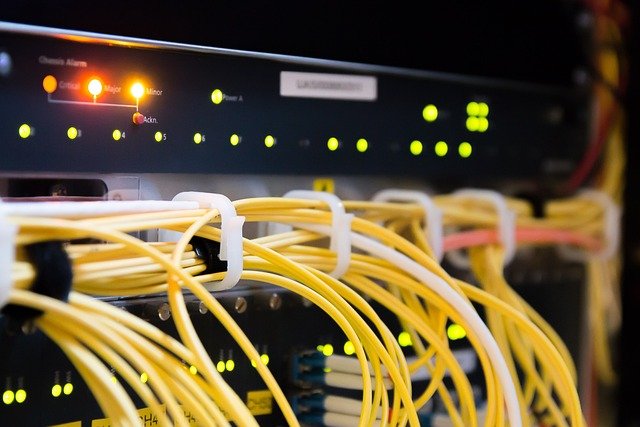Energy-Efficient Design Practices for Carrier Networks
Carrier networks face growing demand for broadband and low-latency services while needing to reduce energy consumption. This article surveys practical design practices—from fiber and satellite choices to edge caching, routing, and security approaches—that help carriers improve power efficiency without sacrificing service quality or connectivity.

Carrier networks must balance growing traffic, diverse access technologies, and sustainability goals while preserving connectivity and service quality. Energy-efficient design is not a single change but a portfolio of choices spanning physical infrastructure, transport and access layers, and operational policies. This article outlines practical practices operators can apply to reduce power usage across fiber and satellite links, local and distributed edge resources, routing and peering, and security functions such as encryption, all while keeping latency and QoS within acceptable bounds.
How does latency affect energy use?
Lowering latency often requires closer processing and smarter traffic routing, which can increase equipment counts but reduce transport power per transaction. Techniques like traffic prioritization and intelligent routing reduce repeated retransmissions and long-path hops that waste energy. Balancing latency with sleep modes and dynamic capacity scaling—so links and line cards can downshift during low-load periods—helps preserve QoS without continuous peak-power operation. Measuring energy per packet and per-transaction provides a clearer view than raw throughput metrics when optimizing for latency-sensitive services.
What role do fiber and satellite play in efficiency?
Fiber remains energy-efficient per bit for high-capacity backhaul, with lower loss and fewer active amplifiers on dense routes. Satellite links, including LEO systems, add flexibility for coverage but can have higher per-bit energy costs due to payload power and ground station demands. Hybrid approaches that route bulk traffic over fiber and reserve satellite for remote connectivity or redundancy can optimize overall energy use. Planning should include expected traffic profiles and the energy characteristics of terminal equipment, optical amplifiers, and ground infrastructure.
How can edge and caching reduce consumption?
Deploying edge nodes and distributed caching reduces long-haul transport and repetitive fetches from centralized data centers, cutting both latency and total energy spent per user request. Edge infrastructure should be right-sized: smaller, energy-efficient servers and smart content placement reduce idle power. Caching policies that favor high-hit-rate content and use warm-standby modes for compute can lower the need for always-on capacity. Energy-aware orchestration that migrates workloads to consolidated or lower-power sites during off-peak hours further improves efficiency.
How do routing, peering, and infrastructure interact?
Efficient routing and strategic peering reduce path lengths and transit costs, lowering energy consumed by intermediate routers and links. Route selection that favors lower-cost, lower-energy paths—while respecting QoS—can be integrated into traffic-engineering systems. Infrastructure choices like modular router designs, chassis-level power management, and consolidation of underutilized facilities reduce baseline consumption. Planning fiber routes and co-locating peering points with major content sources minimizes unnecessary transport and associated power draw.
How to balance qos, slicing, and spectrum use?
Quality of service policies and network slicing allow carriers to allocate capacity precisely, avoiding blanket overprovisioning. Slicing enables separate, optimized resource pools for different service classes; for example, low-bandwidth slices with strict latency can be provisioned differently from bulk best-effort slices. Radio spectrum management affects energy at the access layer: choosing modulation, power control, and subcarrier allocations that match demand curbs wasted radio energy. Dynamic spectrum sharing and adaptive modulation can maintain QoS targets while minimizing transmit power.
How do security, encryption, and connectivity fit in?
Security functions like encryption and deep packet inspection add processing overhead and power draw. Offloading common encryption tasks to hardware accelerators or using energy-optimized crypto implementations lowers impact. Designing secure connectivity with efficient session handling, session reuse, and connection pooling avoids repeated handshakes that consume extra cycles. Where possible, place security inspection at consolidated points with scalable, power-managed appliances rather than distributing full inspection across every node.
Carrier operators should view energy efficiency as an integrated discipline: combine fiber-first transport for bulk flows, prudent satellite use for coverage gaps, edge caching to cut long-haul demand, routing and peering to shorten paths, and QoS/slicing to match capacity to need. Security and encryption must be considered in power budgets, with hardware acceleration and efficient session management mitigating overhead. Regularly measuring energy per function and embedding power-awareness into orchestration and procurement decisions turns efficiency goals into operational practice.
Conclusion Energy-efficient carrier networks rely on coordinated choices across infrastructure, protocols, and operations. By optimizing latency trade-offs, selecting appropriate transport technologies, leveraging edge caching, refining routing and peering, managing spectrum and slices, and applying energy-conscious security measures, carriers can reduce energy intensity while maintaining connectivity and service quality. Continuous measurement and iterative adjustment keep efficiency improvements aligned with changing traffic patterns and technology evolution.





